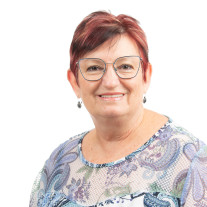Education and Training Series #100: Advanced manufacturing supporting Gen IV reactor systems
This webinar is part of a series hosted by the GIF Education and Training Working Group since 2016.
The link to register to this webinar can be found on this page under "about this webinar".
Who should attend?
Policymakers, industry professionals, regulators, researchers, students, the general public.
About the "GIF Education and Training" Webinars
These webinars, organised by the GIF Education and Training Working Group are streamed live monthly. The recordings and slide decks are accessible after the webinar on this website. These webinars cover a very broad range of technical and policy related topics. At the end of 2023 they have been viewed by more than 15000 people (approximately half of the views during the live streams and the other half views being of the archives on the public GIF website). In total, the GIF webinars have reached Generation IV enthusiasts, scientists, and engineers in more than 80 countries.
These webinars are organised and hosted by the GIF Education and Training Working Group (ETWG).
About this Webinar
The timeous and economic deployment of new generation reactors has several barriers to overcome with some examples being (1) qualified high temperature material (2) large scale fabrication and integration of components through welding processes (3) suppliers with NQA-1 qualification and (4) environmental testing facilities. Additionally, barriers for first entrée to market are the perception that new materials and the associated manufacturing techniques are too arduous and therefore not a thought within the design decision framework. Various organizations and working groups, both national and international, are working together to debunk the perceptions, with strong and focused industry focused research to systematically address the technical barriers. Additionally, the paradigm for material research has changed significantly over the past decade, to ensure fully integrated material and manufacturing development, therefore not only accelerating the development processes, but also to ensure that it is manufacturable and that unique or enhanced properties are being generated. Although additive manufacturing processes are known to have beneficial opportunities to leverage for new reactor designs, various other advanced manufacturing processes are available to be explored.
This presentation will provide an overview of the GIF Advanced Manufacturing and Materials Engineering working group (AMME WG) and the collaborative research in process to highlight the role that advanced manufacturing can have on the deployment of Gen IV systems. Additionally, opportunities of various other manufacturing processes are discussed with potential key applications. As there is no “one recipe fits all”, it is important that a designer and developer should explore the behavior of the component material-manufacturing process combo over the full lifecycle. The presentation will close by providing an brief overview of the US Advanced Materials and Manufacturing Technologies program.
Dr. Patricia Paviet from PNNL, USA, member of GIF ETWG will facilitate this webinar.
Presentation of the webinar
Meet the presenter

Dr
Isabella J. VAN ROOYEN
Dr. Isabella Van Rooyen is a senior technical advisor for Advanced Material Systems specifically integrating advanced and manufacturing techniques and material development to accelerate technology readiness through advanced characterization techniques and performance testing. She has been PI /co-PI for over 15 government funded projects as a distinguished staff scientist tenured at INL, national technical director for the DOE-NE AMM program (2019-2021), material development technical area lead for the DOE-NE-AMMT program. She published 50+ journal articles, 30+ conference proceeding papers, and 100+ technical/scientific reports. Four patents awarded (2020, 2021, 2021 2022), and six patents pending for ceramic, metallic and gradient components, and corrosion resistant heat management components fuel through AM processes.